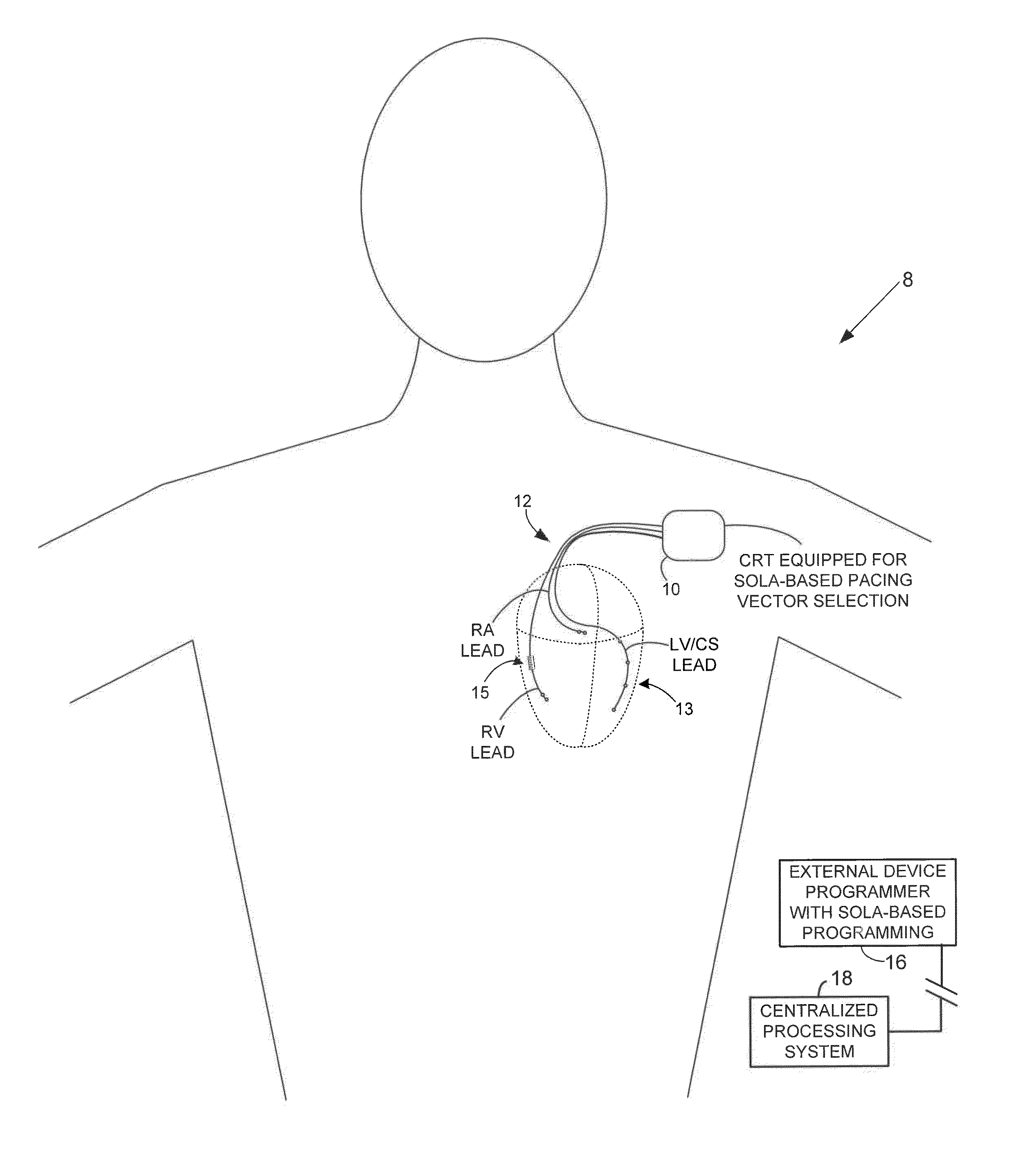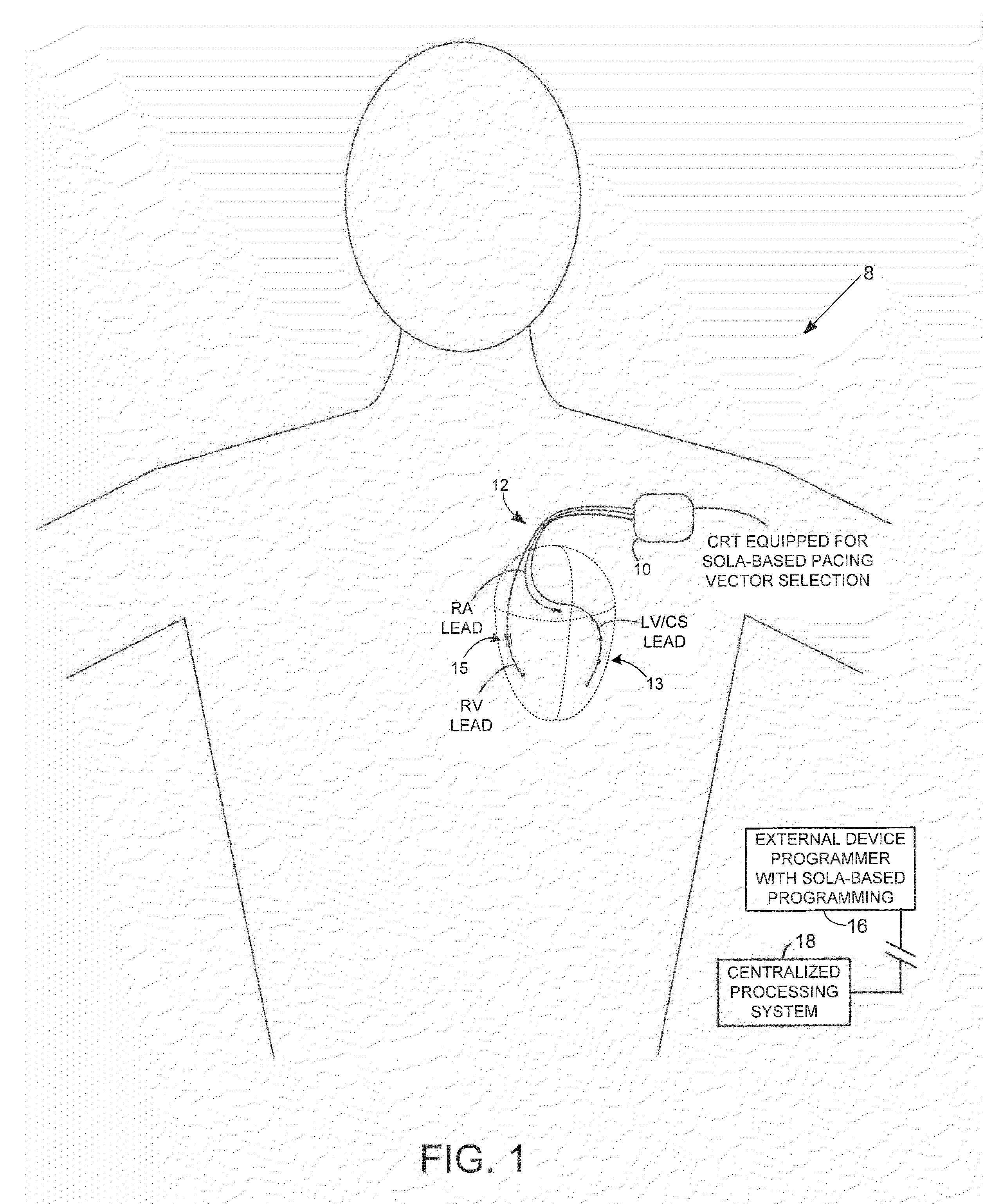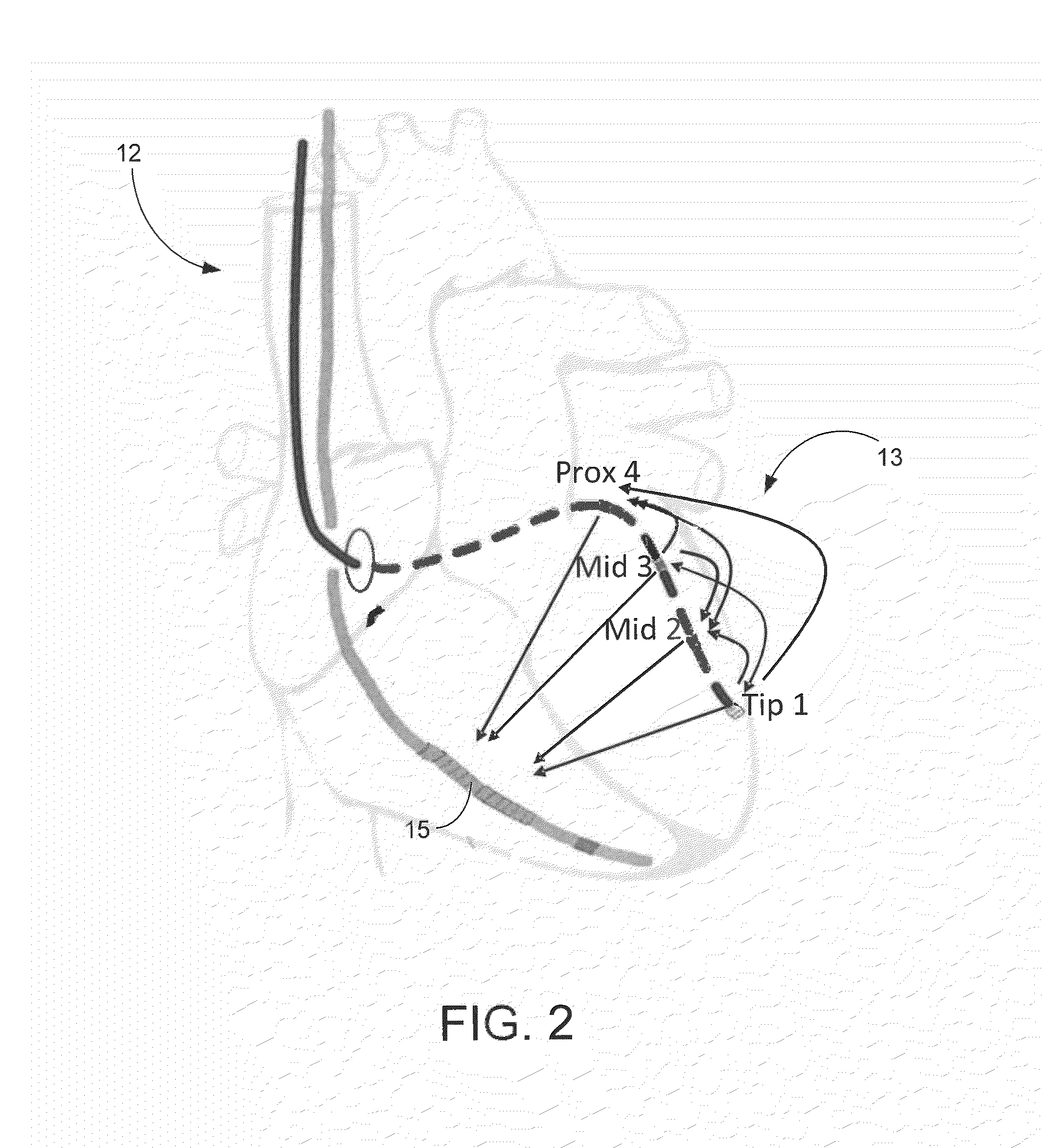Systems and methods for selecting pacing vectors based on site of latest activation for use with implantable cardiac rhythm management devices
a technology of pacing vector and activation site, which is applied in the direction of electrotherapy, heart stimulators, therapy, etc., can solve the problems of micro-dislodged or even migrated, and difficult to find the optimal placement location of the implanted device, so as to simplify the clinician's workflow and reduce the amount of time and effort.
- Summary
- Abstract
- Description
- Claims
- Application Information
AI Technical Summary
Benefits of technology
Problems solved by technology
Method used
Image
Examples
Embodiment Construction
[0027]The following description includes the best mode presently contemplated for practicing the invention. This description is not to be taken in a limiting sense but is made merely to describe general principles of the invention. The scope of the invention should be ascertained with reference to the issued claims. In the description of the invention that follows, like numerals or reference designators will be used to refer to like parts or elements throughout.
Overview of Implantable Systems and Methods
[0028]FIG. 1 illustrates an implantable medical system 8 equipped for expedited identification of suitable pacing vectors (alone or in conjunction with an external programmer.) In this example, the implantable medical system 8 includes a CRT device 10 (which may be a pacer, ICD, CRT or other suitable device) equipped with a set of cardiac sensing / pacing leads 12 implanted on or within the heart of the patient, including a multi-pole LV lead implanted via the CS. In FIG. 1, a stylized...
PUM
 Login to View More
Login to View More Abstract
Description
Claims
Application Information
 Login to View More
Login to View More - R&D
- Intellectual Property
- Life Sciences
- Materials
- Tech Scout
- Unparalleled Data Quality
- Higher Quality Content
- 60% Fewer Hallucinations
Browse by: Latest US Patents, China's latest patents, Technical Efficacy Thesaurus, Application Domain, Technology Topic, Popular Technical Reports.
© 2025 PatSnap. All rights reserved.Legal|Privacy policy|Modern Slavery Act Transparency Statement|Sitemap|About US| Contact US: help@patsnap.com



